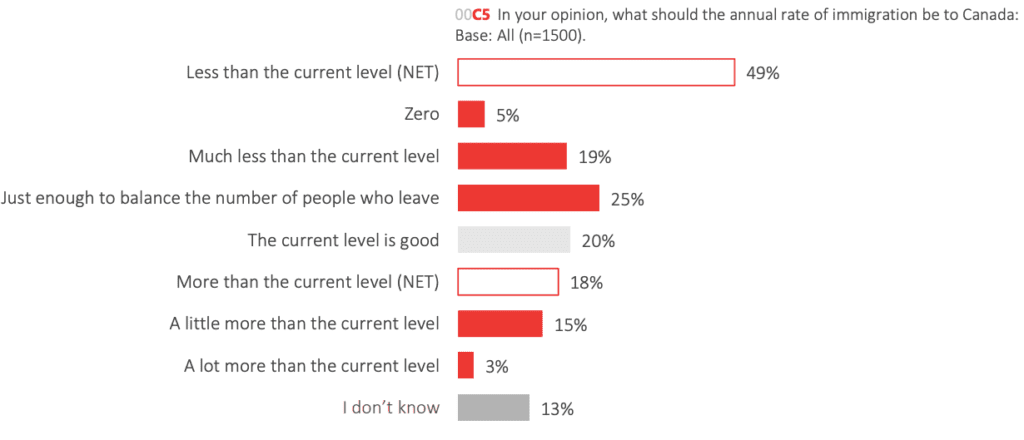Brian Graff responds to Eric Lombardi’s piece “The death of merit, the birth of aristocracy, and Canada’s quiet descent into neofeudalism”, originally published in The Hub.
Rube Goldberg was a famous cartoonist in the 1930s who created visions of crazy complicated machines that did simple tasks in an absurd, complex and roundabout way.
I thought of Goldberg as I read Eric Lombardi’s “The death of merit, the birth of aristocracy, and Canada’s quiet descent into neofeudalism” – which might seem impressive to some readers who count themselves as also knowing the “painful truth” that “diminishing hope among those left behind is a story of falling living standards.”
I know Eric from his posting on X (Twitter) as a neo-liberal YIMBY who comments on all sorts of public policy issues, though his background is stated as “strategy management consulting in the finance and technology sectors.” Eric is a technocrat with no education in economics, policy, urban planning or history, which is typical for young neo-liberal (or “New Liberal”) YIMBYs.
Eric’s Rube Goldberg polemic is full of errors, such as the contention that “medieval Europe from the 9th to the 15th centuries, was characterized by economic stagnation”. No, that would be the “Dark Ages”, ending around 1000 AD. The next 400 years were a period of population growth, growing trade and industry, growing towns and slow progress, that provided the foundation for the Renaissance. The great Romanesque and Gothic cathedrals date from this period. The plague caused a population crash, resulting in labour shortages and other changes that forced social changes, something we can identify with given our own 2020 pandemic.
Eric is generally right that we live in a time of increasing inequality both in terms of wealth and of power, but he gets most of the mechanics and connections wrong. Thomas Piketty’s “Capital in the Twenty-First Century” did a thorough job of showing how starting in the 1970s, the shift to neoliberalism in Europe, the US and elsewhere saw the retreat of the welfare state and deregulation. Globalization has been the “race to the bottom” that saw poorer countries like China prosper while average people in wealthier industrialized/Western countries lost ground.
For me, the real problem came with this section:
“Engaging in NIMBYism, these elites have sought to inflate their property values and maintain neighbourhood exclusivity, leading them to advocate for restrictive development policies. Their decades-long sway over policy via deep political relationships has resulted in stringent growth regulations, rendering new housing development slow, prohibitively expensive, and dominated by big businesses.”
Eric lumps in millions of Boomers who managed to buy homes, sometimes despite double digit interest rates or unemployment, with big businesses. This is the usual YIMBY claim of some sort of conspiracy against young people, but the irony is that in California, where YIMBYism first took hold on this continent, it turned out that it was the YIMBYs who were being secretly funded by wealthy developers or interests who wanted more density to make huge profits.
Urban planning and zoning bylaws first took hold in Canada in the 1930s. I grew up in Don Mills, which was a planned community that had zoning bylaws from the start. Though, by the 1990s the zoning bylaws had been amended several times by North York to use terms and rules similar to the rest of the City of North York, and ended up far more permissive – 1500 sq. ft. homes were being demolished for 4,000 sq. ft. monster homes.
The City of Toronto had even older bylaws, which were updated in the 1960s, and then in 1986. After amalgamation in 1997, the City had around 50 different bylaws (most were in Scarborough), and it took until 2013 to create a single “harmonized bylaw” for bureaucratic convenience and to reduce complexity – but it essentially just copied what was in the existing bylaws instead of being more restrictive.
A new Official Plan was passed for the amalgamated City in 2002. It called for adding density, mainly in Downtown, four other “Centres”, and in mixed use areas. The City also has policies like the 2010 ”Avenues” policy to add more density on major commercial streets. But low density residential areas were not meant to change – a concept that goes back to the late 1960s and early 70s when Jane Jacobs, John Sewell and others fought for this policy. They were not Boomers, nor were they out to inflate property values.
And then, at least in Ontario, there is the Ontario Land Tribunal (OLT), previously known as the Ontario Municipal Board. A recent study in Hamilton found that around 97% of its decisions were in favour of development, which seems accurate. The OLT hearings are “de novo”, which means they essentially pay little attention to council’s decision. But even then, another study showed that 91% of individual votes by Councillors were pro-development.
Eric provides no concrete examples of anything to back up his view of neo-feudalism, other than the cozy relationship of the provincial government to developers, which has nothing to do with “NIMBY” homeowners.
Canada was never a very liberal country when it came to economics. Instead, Canada had a long tradition of government involvement in the economy, starting with MacDonald and government support for creating the Canadian Pacific Railway (CPR) and the National Policy (which was actually defensive, given that the US had cancelled a limited free trade deal in 1865, and Canadian tariffs were usually lower than the ones the US imposed on our goods).
Canada does have a huge problem of oligopolies and concentration of ownership – 5 banks, 3 main grocery chains and 3 cell phone companies. But the US is not far behind us. The US heavily regulated airlines and other industries from the 1930s until the 1960s, but since then, deregulation and neoliberal policies allowing mergers and takeovers have seen competition decline – the breakup of AT&T was the last major action in the other direction.
Eric complains of a Canadian “conservative business culture” and complains that Canadian companies are not as open to innovation as their American counterparts, while ignoring the irony that the Canadian economy has long been dominated by foreign ownership and branch plants.
Canada is largely an economic “satellite” of the US. Our best and brightest have often headed south since Confederation, due to greater opportunities south of the border. Before 1900, roughly as many people emigrated from Canada as immigrated here – many people did both, including heads of major US film studios during Hollywood’s golden age.
I would be willing to bet Mr. Lombardi would not know the names Walter Gordon, Mel Watkins, Herb Gray or even Mel Hurtig. But that brings us to 1988 and Brian Mulroney. Economic nationalism in this country died or became unfashionable or futile after the 1988 Free Trade Election, but that is not all that Mulroney did.
Lombardi briefly mentions immigration as boosting housing prices and having negative impacts on wages and productivity. Eric would make a terrible doctor based on his misdiagnosis of the causes of our standard of living and economic problems, but he got this one right in attributing the policy to “influential business interests”.
Many people might have heard by now of the Century Initiative, a lobby group started by Dominic Barton (ex of McKinsey) which since 2015 has pushed for Canada to have 100 million people by 2100, by means of increasing immigration to 500,000 a year, then 1.25% of population afterwards. Finance Minister Freeland was a member of this group prior to being elected.
Since being elected in 2015, the Liberal government has followed this plan – Barton himself was an advisor to the government early on. Since 2015, the price of housing has rapidly accelerated, and GDP per capita growth fell farther and farther behind the US – and more recently turned negative.
But even under Stephen Harper, housing affordability was a problem. Housing prices started to rise faster than incomes around 2000, and gimmicks like lowering the down payment or increasing amortization to 30 years were meant to help buyers, but in reality, they just increased demand and let buyers bid up prices even more.
Prior to Brian Mulroney, Canada had a “Tap on, tap off” immigration policy where immigration was tied to short term economic conditions. From 1983-1985, during a recession, immigration was below 90,000 per year. But in 1990, Mulroney and Immigration Minister Barbara MacDougall changed the policy to constant high or increasing immigration – up to 250,000 initially.
An October 1990 column in The Globe by Hugh Winsor stated:
“Immigration Minister Barbara McDougall has won a major cabinet battle by convincing her colleagues that increased immigration will be good for Canada economically and provide the Conservatives with a new source of voters, sources say.
Despite concerns about the social and financial impact of increased immigration and doubts about the country’s ability to assimilate new arrivals at the current rate, Ms McDougall will announce tomorrow that Canada will begin accepting up to 250,000 immigrants a year.
But a major study of immigration by the Economic Council of Canada questions the over-all impact. ECC economist Neil Swan… said decisions about immigration should be made on non-economic grounds.”
Mr. Lombardi is too young to recall much about the economy of the 1990s. The combination of the Free Trade Agreement, high interest rates to fight inflation, a glut of housing from a real estate bubble bursting, and high immigration meant that the 1990s were something of a lost decade for Canada, with high unemployment and slow growth, particularly compared to the faster recovery of the US during the same period. Young Canadians of that period felt as pessimistic about Canada as young people do today, and the newspapers were full of stories about the “brain drain” to the US.
It wasn’t until the late 1990s that housing prices started rising, despite the population growth in the years since 1990. And with the exception of the 2009 crisis, housing prices and population growth have both been increasing at unsustainable rates ever since.
A 2023 BMO report titled “Catch-23: Canada’s Affordability Conundrum” states:
“Regression analysis suggests that every 1% rise in population will be associated over time with real home price growth of just over 3% per year. In recent years, Canada’s population has been growing at an average annual pace of 1.5% per year (and a whopping 2.7% in 2022 alone), which is consistent over time with 5% annual home price gains on top of inflation.”
US investment levels in housing are still below their 2006 peak. Meanwhile, Canada is at near record levels and the GTA has 48 skyscrapers under construction – compared to just 19 in NYC. Various studies claim that Canada needs to build millions of housing units to catch up, even though per capita we are not far off from the US or Australia.
So, the obvious solution to housing prices, wages and declining productivity is to slash immigration, as well as foreign students and Temporary Foreign Workers (TFWs).
Canada is a rich country – more people means less capital per worker. What complicates things is that we have high levels of Foreign Direct Investment, but we also have high levels of Direct Investment Abroad. For example, the CPP fund has only $80 billion invested in Canada, just 14% of its total portfolio.
Cutting immigration alone is no solution, and high population growth is only part of the problem. Signing more free trade deals is not the solution either. Canada already has the highest level of tertiary (post-secondary) education in its workforce of any G7 country, so more university degrees is not an answer. More foreign investment is not the solution when it is part of the problem, and particularly when we are having to spend billions to attract electric vehicle battery plants when the spin off benefits don’t seem to justify the cost.
More competition, investment and entrepreneurialism are likely to take us in the right direction, and even Eric seems to understand that these are important to our standard of living increasing. But Lombardi is a neoliberal technocrat with little education or experience in public policy – nevertheless, The Hub is giving him a platform to construct complex theories about Canada’s economy and evolution, built on shaky intellectual foundations when he is clearly out of his depth. What little truth there is in his neoliberal analysis means he might be aiming in the right general direction, yet he still misses the right target by including average middle-class homeowners as culprits along with any actual villains.
All content on this website is copyrighted, and cannot be republished or reproduced without permission.
Share this article!




The truth does not fear investigation.
You can help support Dominion Review!
Dominion Review is entirely funded by readers. I am proud to publish hard-hitting columns and in-depth journalism with no paywall, no government grants, and no deference to political correctness and prevailing orthodoxies. If you appreciate this publication and want to help it grow and provide novel and dissenting perspectives to more Canadians, consider subscribing on Patreon for $5/month.
- Riley Donovan, editor